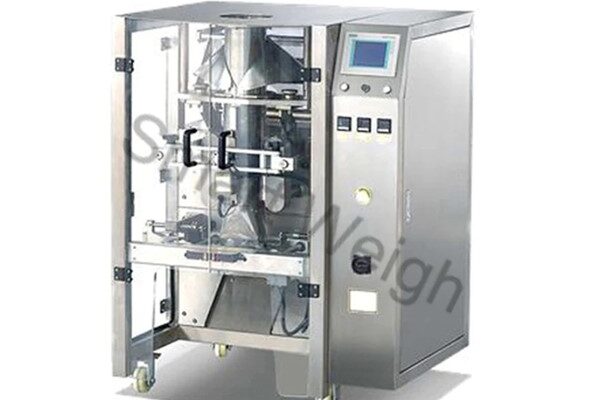In today’s fast-paced world, efficient and automated packaging solutions play a vital role in various industries. One such technology that has revolutionized packaging operations is the vertical packaging machine. Coupled with a tray denester, these machines offer unparalleled efficiency, reliability, and versatility. In this article, we will delve into the details of vertical packaging machines and tray denesters, exploring their working principles, benefits, applications, and latest advancements.
How a Vertical Packaging Machine Works
A vertical packaging machine is a state-of-the-art equipment designed to streamline packaging processes. It consists of several key components, including a feeding system, film roll holder, sealing unit, and control panel. The machine operates by forming a continuous tube from a roll of packaging film, filling it with the desired product, and then sealing and cutting it into individual packages.
The benefits of using a vertical packaging machine are manifold. Firstly, it enables high-speed packaging, allowing manufacturers to meet demanding production targets efficiently. Secondly, the machine ensures precise control over the packaging process, minimizing product waste and maximizing cost-effectiveness. Lastly, vertical packaging machines provide excellent product protection, extending the shelf life and maintaining the quality of the packaged items.
Tray Denester: An Essential Component
A tray denester is a crucial component that complements the functionality of a vertical packaging machine. It is responsible for automatically dispensing trays or containers onto the machine’s conveyor, ensuring a smooth and continuous packaging process. By eliminating the need for manual tray placement, the denester significantly increases productivity and reduces labor costs.
The advantages of using a tray denester in packaging processes are noteworthy. It eliminates potential human errors associated with manual tray handling, ensuring consistent and accurate placement. Moreover, the denester is capable of handling various tray sizes and materials, making it a versatile solution suitable for different industries.
Applications
Vertical packaging machines and tray denesters find extensive applications across various industries. In the food packaging sector, these machines are widely used for packaging snacks, confectionery, grains, and other food products. The precise control and hygienic packaging offered by vertical packaging machines make them ideal for the food industry.
In the pharmaceutical packaging industry, vertical packaging machines ensure the safe and efficient packaging of medicines, tablets, and capsules. The machines can handle different blister pack formats, ensuring accurate dosing and product protection.
Personal care product packaging also benefits from vertical packaging machines and tray denesters. These machines enable the packaging of items such as cosmetics, toiletries, and hygiene products with precision and speed.
Benefits
The utilization of vertical packaging machines and tray denesters brings several advantages to packaging operations. Firstly, these machines significantly enhance efficiency and productivity. With high-speed packaging capabilities and automation, manufacturers can meet increasing demands while maintaining consistent product quality.
Moreover, vertical packaging machines and tray denesters contribute to reducing labor costs. By automating the packaging process, manufacturers can streamline their operations and allocate resources more effectively. This not only leads to cost savings but also allows employees to focus on more skilled tasks.
Furthermore, the combination of vertical packaging machines and tray denesters improves product presentation and shelf appeal. The machines offer precise filling and sealing, ensuring that products are attractively packaged and ready for display.
Factors to Consider
Selecting the right vertical packaging machine and tray denester is crucial for optimizing packaging processes. Several factors should be considered during the decision-making process. Firstly, machine specifications and capabilities should align with the specific packaging requirements. This includes factors such as packaging speed, size range, and sealing options.
Customization options are also important to cater to unique product and packaging needs. Manufacturers may require specific features or modifications to accommodate their products effectively. Therefore, choosing a supplier that offers customization options is essential.
Maintenance and support should not be overlooked. Opting for a reliable supplier that provides regular maintenance services and technical support ensures the smooth operation of the machines and minimizes downtime.
Latest Technological Advancements
The packaging industry is constantly evolving, and vertical packaging machines and tray denesters continue to undergo technological advancements. One notable trend is the integration of these machines with the Internet of Things (IoT) and Industry 4.0 principles. This enables real-time monitoring, data analysis, and remote control, enhancing overall efficiency and traceability.
Advanced control systems and sensors are also being implemented in modern vertical packaging machines and tray denesters. These systems ensure precise control over the packaging process, optimize material usage, and minimize errors. Sensors provide real-time feedback on various parameters, allowing for adjustments and maintaining consistent packaging quality.
Challenges and Solutions
While vertical packaging machines and tray denesters offer significant benefits, certain challenges may arise during their operation. One such challenge is ensuring product integrity and quality. It is crucial to select appropriate packaging materials and ensure proper sealing and protection to prevent spoilage or damage.
Dealing with different packaging materials can also pose a challenge. Manufacturers may encounter variations in film characteristics, tray sizes, or product shapes. However, machine flexibility and customization options can address these challenges, allowing for seamless packaging across different materials.
Addressing potential machine malfunctions is another important aspect. Regular maintenance, proper training of operators, and prompt troubleshooting can minimize the impact of machine breakdowns and maintain uninterrupted production.
Conclusion
Vertical packaging machines and tray denesters have transformed the packaging industry by providing efficient, reliable, and versatile solutions. These technologies offer numerous benefits, including increased productivity, reduced labor costs, and improved product presentation. By considering factors such as machine specifications, customization options, and maintenance, manufacturers can choose the most suitable equipment for their packaging needs.
With the continuous advancements in technology, vertical packaging machines and tray denesters are expected to become even more sophisticated, integrating IoT capabilities and advanced control systems. Smart Weigh Manufacturers should stay updated with the latest developments to leverage these innovations and optimize their packaging processes.

